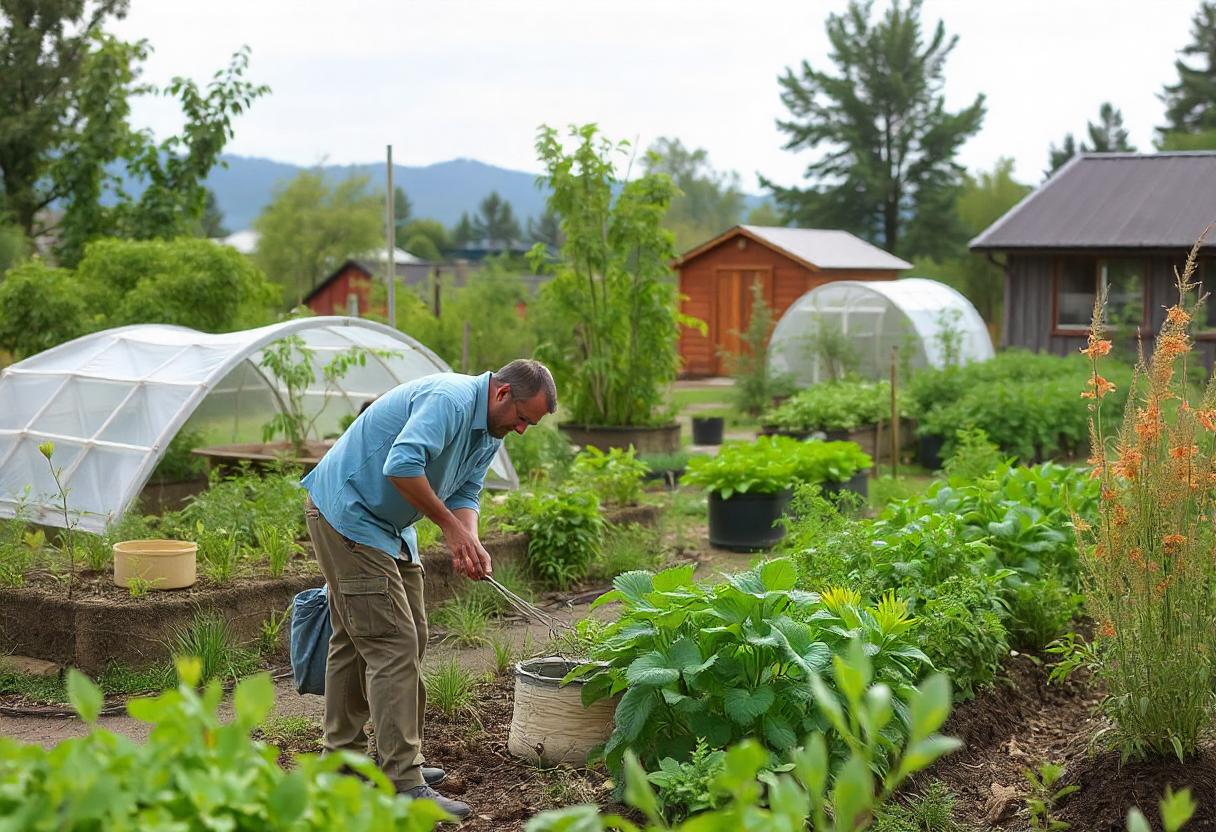
Introduction
Permaculture is a holistic design philosophy that aims to create sustainable and resilient ecosystems by mimicking natural systems. Rooted in principles of ecology, permaculture integrates land management, agriculture, and community living to build systems that are both productive and sustainable. This article provides a comprehensive overview of permaculture, its principles, applications, benefits, and challenges.
History and Development
Permaculture, a term coined by Bill Mollison and David Holmgren in the 1970s, is derived from “permanent agriculture” and “permanent culture.” The concept emerged as a response to the environmental and social issues associated with conventional agricultural practices. Mollison and Holmgren sought to create a design system that harmonizes human activity with the natural world, leading to the development of permaculture principles and practices.
Core Principles of Permaculture
Permaculture is guided by several core principles that are designed to create sustainable and self-sufficient systems. These principles can be grouped into three ethical guidelines and twelve design principles.
Ethical Guidelines
- Care for the Earth: This principle emphasizes the importance of maintaining the health of the planet’s ecosystems, ensuring that natural resources are used responsibly and regenerated.
- Care for People: Permaculture focuses on meeting human needs while promoting social equity and community well-being. It advocates for practices that improve the quality of life for all individuals.
- Return of Surplus: This principle encourages the sharing of excess resources and energy, ensuring that surplus is returned to the system to support and enhance its functionality.
Design Principles
- Observe and Interact: Understanding and interacting with the environment to design solutions that work with natural patterns.
- Catch and Store Energy: Utilizing techniques to capture and store energy from the sun, wind, and water for later use.
- Obtain a Yield: Designing systems that provide tangible outputs, such as food, materials, or energy, while also sustaining the ecosystem.
- Apply Self-Regulation and Accept Feedback: Implementing mechanisms to monitor and adjust practices based on feedback and results.
- Use and Value Renewable Resources and Services: Prioritizing the use of resources that are naturally replenished and promoting sustainable practices.
- Produce No Waste: Designing systems that minimize waste and recycle resources back into the system.
- Design from Patterns to Details: Observing broad patterns in nature and applying these insights to create detailed designs.
- Integrate Rather than Segregate: Promoting interconnectedness and collaboration between different elements within the system.
- Use Small and Slow Solutions: Emphasizing gradual and incremental changes that build resilience over time.
- Use and Value Diversity: Encouraging biodiversity to enhance the stability and adaptability of the system.
- Use Edges and Value the Marginal: Recognizing the potential of edges and marginal areas to provide unique benefits and opportunities.
- Creatively Use and Respond to Change: Adapting to changes and challenges creatively to maintain and improve system functionality.
Applications of Permaculture
Permaculture can be applied across various scales and contexts, including:
1. Agriculture
Permaculture farming practices focus on creating diverse, self-sustaining agricultural systems. Techniques such as companion planting, agroforestry, and organic soil management are employed to enhance soil fertility, reduce pests, and increase crop yields.
2. Urban Design
In urban settings, permaculture principles can be used to design community gardens, green roofs, and sustainable housing. These practices aim to improve urban resilience, reduce environmental impact, and enhance community well-being.
3. Water Management
Permaculture emphasizes the efficient use and management of water resources. Techniques such as rainwater harvesting, swales, and greywater recycling are employed to conserve water and prevent erosion.
4. Energy Systems
Permaculture encourages the use of renewable energy sources such as solar, wind, and geothermal. Energy-efficient designs and systems are integrated to reduce reliance on non-renewable resources and minimize environmental impact.
Benefits of Permaculture
Permaculture offers numerous benefits, including:
- Environmental Sustainability: By mimicking natural processes, permaculture reduces environmental degradation and promotes ecosystem health.
- Resource Efficiency: Efficient use of resources and waste reduction contribute to overall sustainability.
- Resilience: Diverse and interconnected systems are more resilient to environmental changes and disturbances.
- Community Building: Permaculture fosters collaboration and community engagement, enhancing social well-being.
- Economic Viability: Sustainable practices can lead to cost savings and increased productivity over the long term.
Challenges and Criticisms
Despite its many advantages, permaculture faces several challenges and criticisms:
- Implementation Complexity: Designing and implementing permaculture systems can be complex and require significant knowledge and expertise.
- Scalability: Some critics argue that permaculture may be difficult to scale up to meet the needs of large populations.
- Initial Costs: Transitioning to permaculture practices may involve initial investments in materials and education.
Permaculture represents a powerful approach to designing sustainable systems that integrate environmental, social, and economic considerations. By adhering to its core principles and adapting its practices to different contexts, permaculture offers a pathway toward more resilient and harmonious living. While challenges remain, the continued development and application of permaculture principles hold promise for a more sustainable future.